|
| Here is a shout out to Bridge Storage, which, instead of whining and moaning about abused and displaced artists discriminated against by public agencies, took safety seriously and upgraded their facility to conform to building and safety codes. Hopefully, Burnt Ramen will follow suit. Underground artist spaces in Richmond work to reopen a year after Ghost Ship
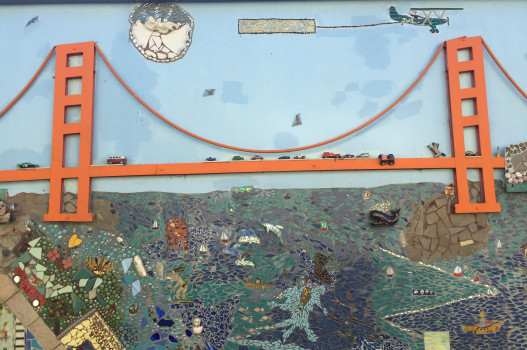
A mosaic mural is seen at Bridge Storage and ArtSpace in Richmond on Dec. 6, 2017 (Tom Lochner)
By Tom Lochner | tlochner@bayareanewsgroup.com | Bay Area News Group
December 11, 2017 at 8:45 am
RICHMOND — Two longtime artist spaces hope to reopen soon, a year after they were shut down during a nationwide crackdown by local building officials following the deadly Ghost Ship warehouse fire in Oakland.
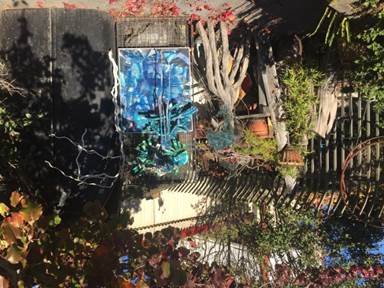
Artwork at Bridge Storage (Tom Lochner)
Bridge Storage and ArtSpace, at 23 Maine Ave. near South First Street, will hold an open house from 4 to 8 p.m. Dec. 13, “one year to the day after we were shut down,” said owner Jeff Wright. The event heralds the upcoming opening of about 7,000 square feet of shared and private studios for artists and craftspeople, and co-working space for businesspeople and entrepreneurs. Bridge Storage also expects to inaugurate a film production studio for independent filmmakers, with a green screen space.
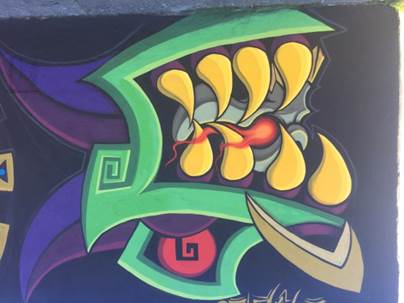
A mural at Burnt Ramen in Richmond, Calif., seen on Dec. 6, 2017 (Tom Lochner)
Burnt Ramen, at Chanslor and Espee avenues, was a longtime performance space for punk and metal music and recording studio, with several residential rooms, until the city shut it down a year ago. Burnt Ramen is “on track to submit a compliance plan” on the way to reoccupy the space safely, said Sadaf Zahoor, one of the evictees.
“We got red-tagged by the city on the 16th of December last year,” Zahoor said. “We were given almost no time to pack up. People got kicked out of their house in the dead of winter.”
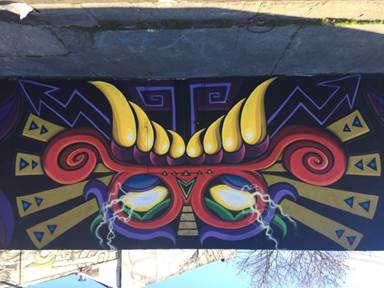
(Tom Lochner/Staff) Detail of mural at Burnt Ramen in Richmond.
Over at Bridge Storage, “After Ghost Ship, we had to kick everybody out,” said manager Laura Johnson.
Thirty-six people died when fire, likely related to electrical issues, broke out during a dance party at the warehouse near the Fruitvale BART station in Oakland on Dec. 2, 2016. Ghost Ship was being used as living space as well as performance space, and according to investigators, was in apparent violation of fire and building codes.
The tragedy triggered a flurry across the country of what many artists perceived as bureaucratic backside-covering, as long-time institutions, many of which had existed in full view and with the knowledge of authorities, and their residents suddenly faced eviction.
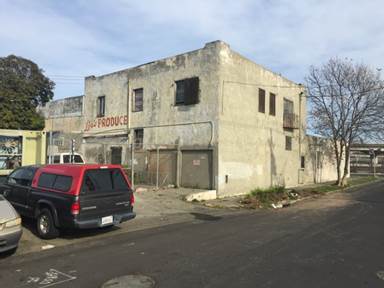
Burnt Ramen, a performance space with some artists quarters at Chanslor and Esopee avenues in Richmond, Calif. , is seen on Dec. 6, 2017 (Tom Lochner)
“The reactionary tactics by cities nationwide was a wake-up call to anyone that lived in a non-traditional dwelling, and most, sadly, were forced out of their spaces when faced with a notice of violation,” Zahoor said in an email.
Over at Bridge Storage, “City officials knew exactly what was going on,” said Johnson. “They’d come to several parties and functions.”
“We were in the process of getting up to code, but it wasn’t finalized.”
A year later, both Burnt Ramen and Bridge Storage see better times ahead.
After the Ghost Ship fire, Burnt Ramen got help from many professionals, including electricians, architects, plumbers, engineering contractors and others familiar with the type of building that the organization occupied. And, “after their initial knee-jerk reaction, the city has tried to figure out how we can back into our space safely,” Zahoor said. She said she hopes to move back into the building perhaps as soon as January.
At Bridge Storage, Wright said he hopes to open an additional 14,000 or 15,000 square feet of space in the near future for arts-related uses. Richmond is a magical place, rich in history; its people have many stories to tell, and some are starting to do it through hip-hop and YouTube videos, he said.
Wright said he could make good money just renting out the space for storage, but that would not be its highest and best use, and he is eager to make the space available to Richmond residents, especially young people, for other uses and to learn marketable skills.
“Bringing life into a place that was being cold and hard and dead has been a joyful experience,” he said.
|

